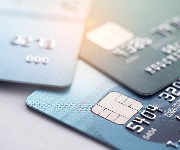Cost of borrowing hits 10-year high

Personal loan rates jump sharply to highest level in a decade.
The year 2000 seems like a lifetime ago now. I hadn’t yet taken my GCSEs, Tony Blair was still a fresh-faced and popular Prime Minister (relatively speaking), Coldplay had just broken into the charts and the England team performed poorly at an international football tournament. OK, so not everything has changed since then.
It was also the last time that it was this expensive to take out a personal loan.
A new millennium
According to data from financial information site Moneyfacts, the average interest rate on personal loans now stands at the highest level for more than a decade.
The average rate on a loan of £5,000 is now a whopping 12.7%, the highest it has been since May 2000. Let’s take a look at how that average rate on a loan of that size has changed over the past decade.
|
Date |
Average loan rate |
|
May 2011 |
12.7% |
|
May 2010 |
12.3% |
|
May 2009 |
12.1% |
|
May 2008 |
10.3% |
|
May 2007 |
8.6% |
|
May 2006 |
7.8% |
|
May 2005 |
8.0% |
|
May 2004 |
8.2% |
|
May 2003 |
9.8% |
|
May 2002 |
11.2% |
|
May 2001 |
11.9% |
|
May 2000 |
13.1% |
As you can see, rates have risen substantially since the heady days of 2006. But why?
It’s the end of the world as we know it
It’s no great surprise to see that 2008 saw a hefty jump in interest rates, which continued into 2009 and onwards. That of course is when the bubble burst, the credit crunch hit and life changed forever (well, for a few years anyway).
Related blog post
- The Consumer Credit Counselling Service writes:
Five steps to becoming debt free forever
If you want to be debt free for good, here’s how to take control.
Read this post
As the economy began to struggle, the days of lax lending started to bite. Suddenly many Brits found themselves a little exposed, with more going out than was coming in. Finances were stretched, bills went unpaid.
Now, with a mortgage, if you fall behind on your repayments, the lender can always just repossess your home. But with a personal loan, there’s no ‘security’ involved for the lender, so the lender suffers more should you fail to repay the loan. And plenty of borrowers started to fail to make their payments.
Understandably, to safeguard against this, the lenders have installed higher rates of interest on their loans. Sure, more people are at risk of failing to keep up their repayments in these testing times, but that risk is offset by the higher rates of interest handed over by those of us who do make our payments each month.
The death of PPI
Another factor behind the rising cost of loans, which is likely to cause rates to jump still further, is the death of the Payment Protection Insurance.
The much-maligned cover is about to cost Britain’s biggest banks around £9bn in compensation, after they finally admitted it was too expensive, greatly mis-sold and exceedingly difficult to claim against, as we highlighted in this article recently. As insurance goes, the whole thing was often a waste of time and money (on our part anyway).
Of course, the banks cannot count on selling PPI policies alongside their loans anymore, meaning their revenues take a hit. And the simple way to counter that is to ramp up the interest rates on their loans.
Getting the advertised rate
John Fitzsimons looks at the crucial things to remember before you apply for a loan
If you take a look at the table below of the best personal loans in the market today, you’ll see there’s quite a significant gap between the rates on offer and the average personal loan rate according to Moneyfacts. And the reason is that there is absolutely no guarantee that when you are accepted for a loan the rate of interest you’ll pay is the same as what you applied for.
Loan providers are only obliged to offer their ‘advertised rate’ to 51% of approved borrowers. To the rest, you may be accepted but the rate you’ll be offered may vary substantially, particularly if you have any black marks on your credit history.
Indeed, multiple applications will also put the providers off, so if you want to get the advertised rate, don’t apply for more than one loan! There are plenty of other ways to ensure you're more likely to get the best offer possible. Have a read of Get a loan by applying tactically.
The best of the best
So with all that said, let’s take a look at the best personal loans in the market today, based on a loan of £5,000 over a five-year term.
|
Provider |
Representative APR |
Total amount repayable |
Monthly repayments |
|
8.4% |
£6,096 |
£101.60 |
|
|
8.7% |
£6,136.20 |
£102.27 |
|
|
8.9% |
£6,163.20 |
£102.72 |
|
|
12.6% |
£6,662.40 |
£111.04 |
|
|
12.9% |
£6,702.60 |
£111.71 |
However, in many cases when borrowing £5,000 you may prefer to do so on a credit card. For a round up of the best purchase credit cards, have a read of New card offering 15 months 0% on spending.
For more sizeable loans, the marketplace becomes far more competitive, with even better interest rates on offer. Here are the best deals you can secure when borrowing £10,000.
|
Provider |
Representative APR |
Total amount repayable |
Monthly repayments |
|
6.7% |
£11,740 |
£195.67 |
|
| Nationwide | 6.8% | £11,766 | £196.11 |
|
6.9% |
£11,794 |
£196.56 |
|
|
7.0% |
£11,820 |
£197 |
|
|
7.4% |
£11,926 |
£198.77 |
More: Get a 0% credit card | What we can learn from the people of Richmond | Banks are stealing your tax relief
Most Recent
Comments
Be the first to comment
Do you want to comment on this article? You need to be signed in for this feature








